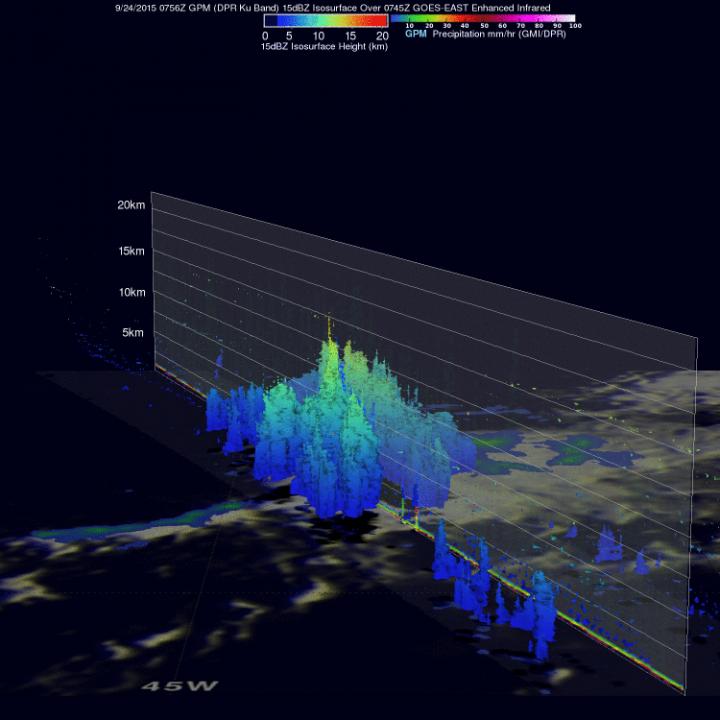
NASA's GPM measures meandering Tropical Depression Ida's precipitation

On Sept. 24, NASA/JAXA's GPM satellite saw some storms in Ida were dropping heavy rainfall at a rate of 122 mm (4.8 inches) per hour. Some storm tops reache 15 kilometers (9.3 miles).
Credits: SSAI/NASA/JAXA, Hal Pierce
GPM is a satellite jointly managed by NASA and the Japan Aerospace Exploration Agency. GPM passed over Ida on September 24, 2015 at 0756 UTC (3:35 AM EDT).
Measurements of precipitation by GPM's Microwave Imager (GMI) and Dual-Frequency Precipitation Radar (DPR) instruments showed that Ida still contained a few embedded strong convective thunderstorms that were dropping heavy rainfall. Some rainfall was measured by GPM's Ku Band radar falling at a rate of 122 mm (4.8 inches) per hour.
GPM's 3-D radar reflectivity data (DPR Ku band) can be used to reveal the intensity of rain showers embedded within a tropical cyclone. Measurements of Ida, a tropical storm at the time GPM passed overhead, showed that isolated thunderstorms had storm tops reaching heights of 15 kilometers (9.3 miles) and intense rain showers.
At 5 a.m. EDT (0900 UTC), the center of Tropical Depression Ida was located near latitude 21.7 North, longitude 45.3 West. That's about 1,180 miles (1,900 km) east-northeast of the Northern Leeward Islands
Ida was moving toward the north-northwest near 3 mph (6 kph), and Ida is expected to turn to the northwest late on September 25. The estimated minimum central pressure is 1007 millibars.
Maximum sustained winds are near 35 mph (55 kph) and the National Hurricane Center expects some weakening over the next two days. Ida is expected to become a remnant low over the weekend.












